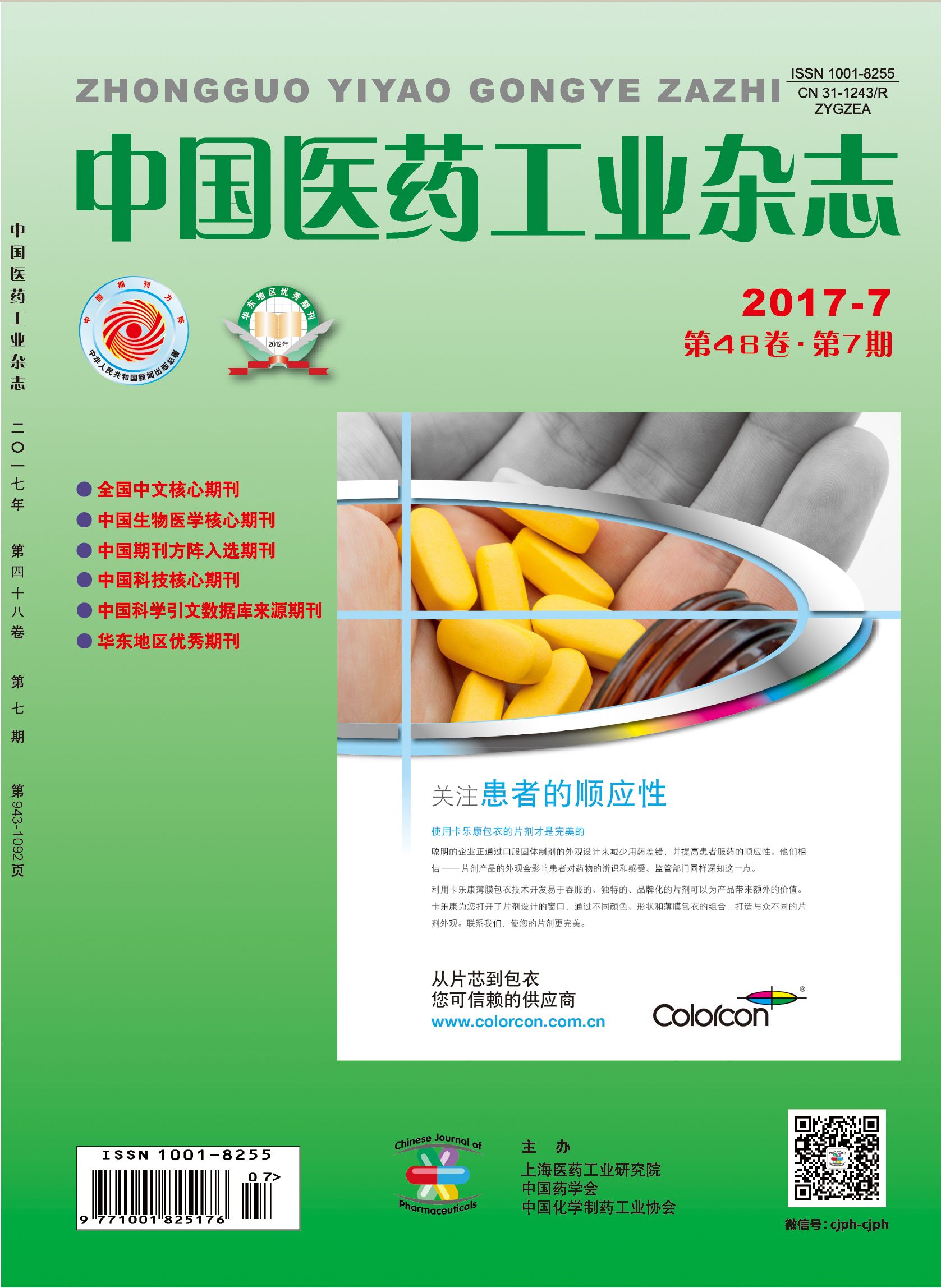Lü Peng1,4, HU Rong2, BIAN Wei3, YANG Yani3, HE Jun1,3*
Docetaxel (DCT) has been recognized as one of the most efficient anticancer drugs. However, its poor water solubility has limited the clinical applications. Albumin, a versatile protein carrier for drug delivery, has been shown to be nontoxic, non-immunogenic, biocompatible and biodegradable. Therefore, it is an ideal material to fabricate nanoparticles for drug delivery. Albumin nanoparticles have gained considerable attention owing to their high binding capacity of various drugs and being well tolerated without any serious side-effects. In this paper, the DCT-loaded bovine serum albumin nanoparticles (BSA-NPs) were prepared by NabTM-technology. Based on the results of a single factor test and an orthogonal design, the preparation and formulation of the title nanoparticles were optimized with particle size, encapsulation efficiency and drug loading as indexes. The property of drug release in vitro was investigated by the dynamic dialysis. Finally, the optimal formulation of the NPs was as follows: BSA 1%; chloroform∶ethanol in a 11∶1 ratio; oil-to-water phase ratio of 1∶49; drug to BSA ratio of 1∶14.8; pH 6.6 of water phase; and the process parameters were as follows: homogenization pressure of 151.68 MPa and for 25 cycle times. The optimized results showed that DCTBSA-NPs had small particle size of (190.10±11.91)nm, high encapsulation efficiency of (95.6±0.5)% and drug loading of (8.1±0.1)% as well as the characteristic of sustained-release in vitro.
